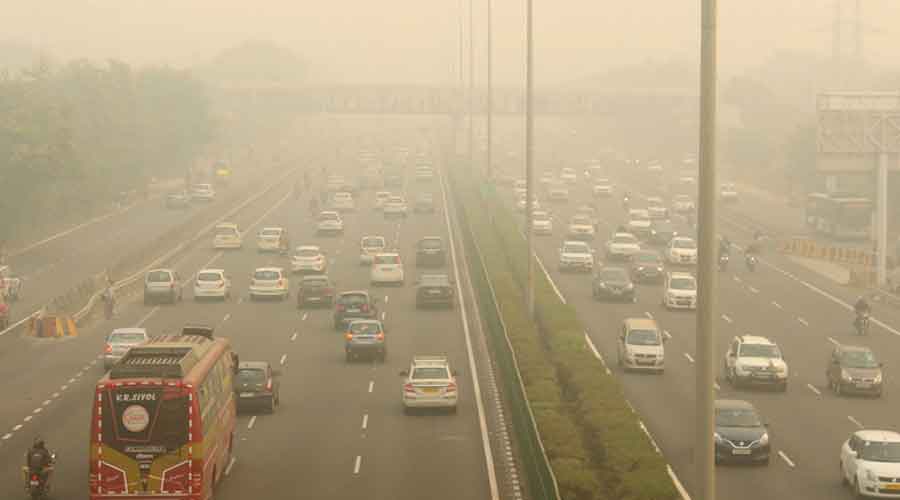The city’s air quality index was 74 at 2pm on Sunday and is set to cross 170 at 2pm on August 30, according to an air quality early warning system (AQEWS) that relays real-time air pollution level as well as makes prediction.
Kolkata, which has critical air polluted levels, is the latest city in the country to get the early warning system, which has been developed by the Pune-based Indian Institute of Tropical Meteorology (IITM).
The system was earlier rolled out in Delhi, Mumbai, Pune and Ahmedabad.
The real-time data as well as predictions, to be made available by the AQEWS, are expected to improve actions to combat surging air pollution levels.
Air quality index (AQI) is calculated based on the presence of the dominant pollutant. In Kolkata, the dominant pollutant on most days is PM2.5, which can enter deep into the lungs and trigger a host of ailments.
An AQI of 51 to 100 is considered satisfactory. The 101-200 range is considered moderate and 201-300 poor.
“For Kolkata, AQEWS uses data mainly from the national air quality network and satellite sources. The system was started experimentally in September 2022 and so far the prediction accuracy is high,” Sachin Ghude, a scientist from IITM, told The Telegraph.
Ghude presented the model during India Clean Air Summit 2023 in Bangalore on Friday.
According to the scientist, IITM has integrated satellite data from a network of 420 air quality monitoring stations across India.
“Other than Union government agencies, we look forward to having more data from state pollution control boards and others to make the prediction more robust,” said Ghude.
“Even participation of citizens using low-cost sensors will further help the process.”
Abhijit Chatterjee, an air pollution expert from Bose Institute, however, sounded caution: “Low-cost sensors are useful for mapping city-level air pollution. But we need to be careful about the sensors’ calibration, particularly in various atmospheric and environmental conditions.”
V. Faye McNeill, a professor at Columbia University, explained at the summit how the PM2.5 levels vary in Kolkata and elsewhere.
“In the morning and evening rush hours, we expect concentrations to be high in a big city like Kolkata... if traffic happens to be an important source,” a released issued by the organisers of the summit quotes McNeill as saying.
The scientist, however, pointed out that during spring, the daily curve of PM2.5 reaches its peak in the afternoon because the particles are then generated secondarily — as opposed to direct emission — following sunlight’s reaction with volatile organic compounds.
Earlier, in the same conference, P.G. Diwakar, who heads the National Institute of Advance Studies, said geo artificial intelligence and other technologies would be combined to predict the air quality of Kolkata and other metro cities of the country.
“We have initiated a pilot project in Bangalore and are assessing its effectiveness,” Diwakar told this newspaper.
“We are planning to come up with our own air pollution forecasting model for Kolkata,” said Kalyan Rudra, chairman of the state pollution control board.
